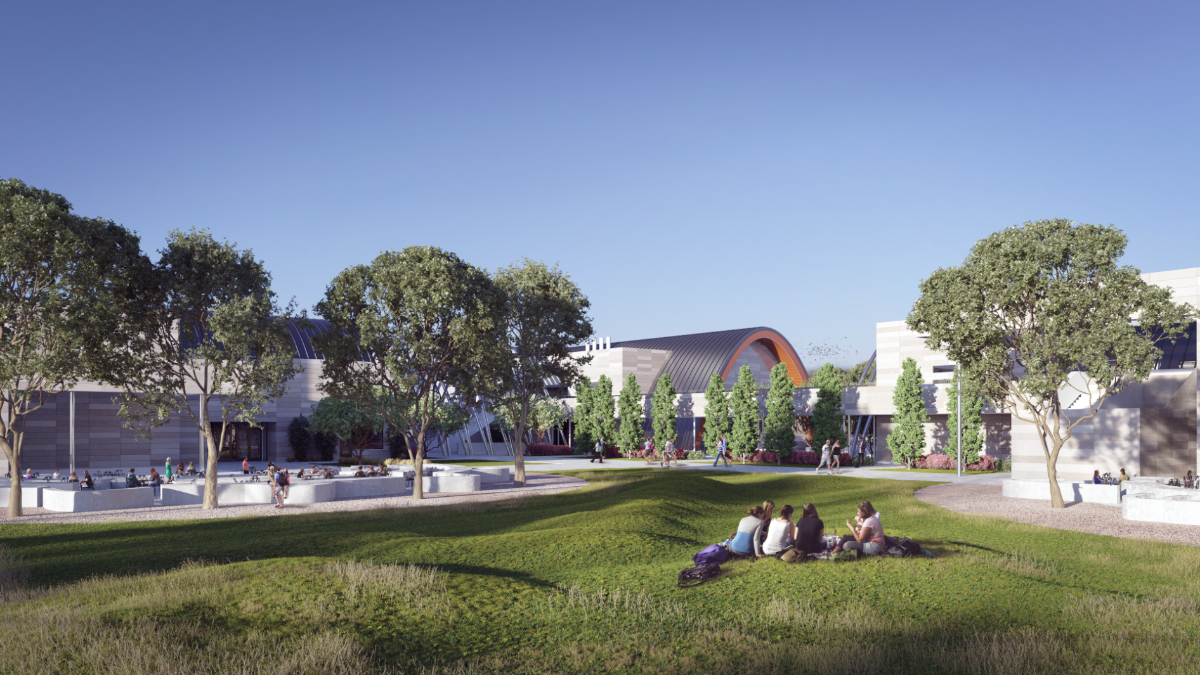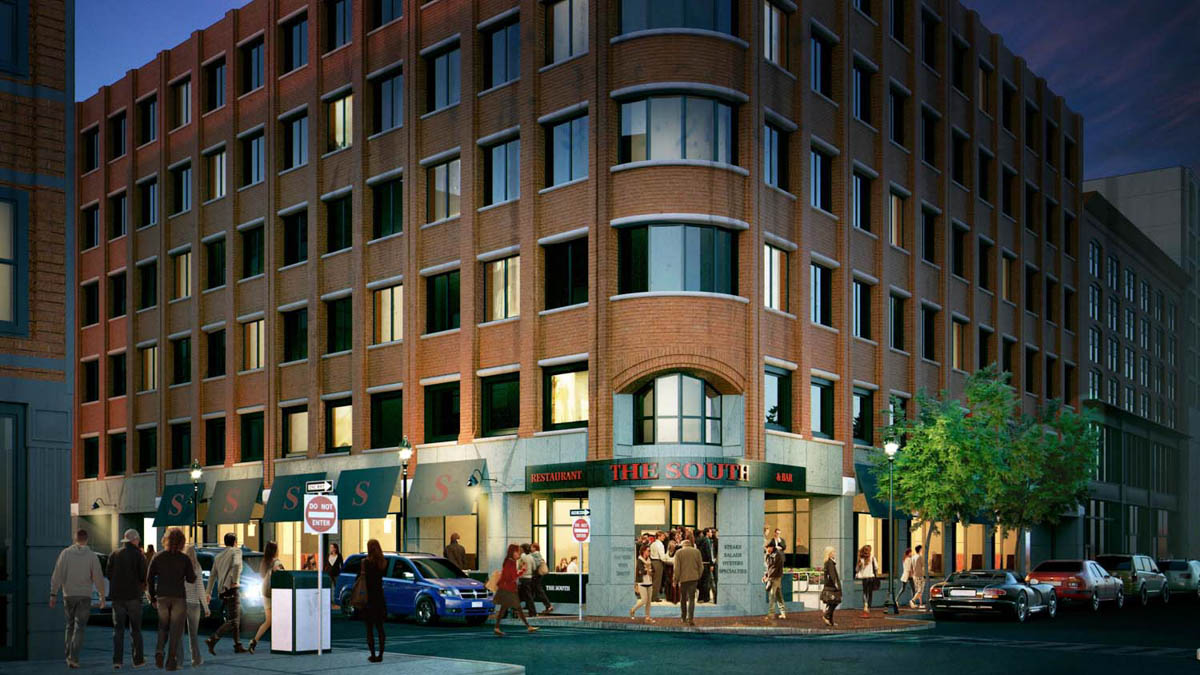EB-5 Funding for Project Development - Do You Qualify?
What is The EB-5 Investment Program?
If you could build the building of your dreams and give a foreign family the chance to give their children an opportunity to embrace the American dream, would you do it?
 Imagine what a potential client would think of you if you could show them a way to get their project funded and save money in the process!
Imagine what a potential client would think of you if you could show them a way to get their project funded and save money in the process!
As an architect you often wear many hats and having the knowledge to help someone acquire project funding would certainly be a good one to add to the collection. While there are several funding options available, we are going to take a look at a lesser known but excellent source of project funding, EB-5. While EB-5 funding can be used for various types of business ventures, today we are going to focus on EB-5 funding for development projects.
A Word of Caution
As with most things in life, you have to take the good with the bad, which in this case can be the language and cultural barrier you may run into with potential investors. If you want to position yourself or you clients to take advantage of cost saving EB-5 funding, you must be able to clearly convey your idea to people who may never lay eyes on your project. 3D rendering is a great tool to use in transcending those barriers. We will talk more about 3D rendering later, first let’s see if your development project would be a good fit for this type of funding.
EB-5 Explained
In 1990 Congress created an Immigration Employment Act (EB-5) that allows foreign investors to gain legal residency in the United States while investing in a new or existing development project. An investment of $1 million (USD) or $500,000 (USD) in the case of a Regional Center towards a new enterprise will grant the investor and his family two year provisional immigrant visas provided that the new development meets the requirements of the EB-5 Act. A direct investment from an EB-5 investor requires them to have a hands on role in the project whereas an investment through the regional center does not require the investor to have an active role in the project. Since funding through a Regional Center is most prevalent in development, projects, that is what we will be discussing with you today.
One of the most common developments that qualify for EB-5 funding is new building developments. Within those two years, the project must benefit the United States Economy by generating at least 10 direct or indirect full time positions per 500K invested.
EB-5 Investments into Someone Else’s Development
Many investors looking to fund a project go through what the U.S. Citizenship and Immigration Services (USCIS) calls a Regional Center. By filing their EB-5 investment through this department, they don’t have to be as involved in the development and can simply invest their money and let the Regional Center make sure the enterprise meets their visa requirements. These Regional Centers generally accrue multiple investments for their projects, which allow investors to invest in a more financially diverse building project. Under this limited partnership, an investor does not have responsibility over employees or managing the development. He simply operates within the provisions of the Uniform Limited Partnership Act.
Why Choose The EB-5 Investor Visa Program?
This program is a way for investors to gain a U.S. green card while committing to a profitable development project that they invested in through a Regional Center. The EB-5 Investor Program is a positive initiative that promotes foreign investment to boost the U.S. economy through the funding of development projects.
Regional Center investors do not often actively participate in the management of a project but they are rewarded for stimulation the U.S. economy. A few of the benefits to investors are:
● Investor does not have to be hands on
● No direct involvement in the invested project
● Free to live anywhere in the U.S.
While the EB-5 funding via Regional Centers has been an option for quite some time now, September 30th, 2015 is when the program is set for review. It is possible that changes could be made to the program, so be sure to check out the USCIS website for updates.
Beyond the Numbers
 While recently speaking with a client who received EB-5 funding for their project, she shared with me an inside perspective about what making an investment can mean to the foreign families. Legally the money invested into an EB-5 project cannot be guaranteed and therefore has the risk of being lost. While many investors analyze the sheer numbers of a project and risk their capital for possible monetary gains, many EB-5 investors participate for a much different reason.
While recently speaking with a client who received EB-5 funding for their project, she shared with me an inside perspective about what making an investment can mean to the foreign families. Legally the money invested into an EB-5 project cannot be guaranteed and therefore has the risk of being lost. While many investors analyze the sheer numbers of a project and risk their capital for possible monetary gains, many EB-5 investors participate for a much different reason.
As you know, in many foreign countries the economic opportunities are far worse than in the U.S. For that reason, many EB-5 investors risk their money to provide better opportunities to their children, something we can all relate to.
While speaking with my client about what EB-5 meant for their project and what it meant to the investor, she shared a great story with me about one of the families who invested in the project getting to ski for the very first time. Those moments are priceless for the families and touching for onlookers. EB-5 funding is great for developers, architects, the U.S. economy, and the families who invest, a rare combination these days.
What Makes EB-5 a Good Source of Funding for You or Your Clients?
If you are seeking funds for you project, EB-5 is a great source to consider. EB-5 funds are offered at a lower interest rate that than of a typical loan, you do of course have to meet certain qualifications to be considered.
As with most loans you must show that you have a clear and feasible development plan. You also must show how your development project will create at least 10 direct or indirect jobs per 500k invested meaning that you need to be far enough along to create jobs with the funds. For example, a developer seeking EB-5 funds to buy land would not be a good candidate. The same developer seeking money to start building the actual structure would be a good candidate.
Even if you have a project that is a good candidate for EB-5 funding, you still are competing with others seeking funds from the same investors, meaning that you need to have a solid plan in place when asking for funds. As we mentioned earlier, 3D renderings can give you an advantage over the competition when seeking EB-5 funding.
Creating Context around Your Project
3D rendering is a cutting edge skill that turns an architect’s blueprints and outlines for a structure into a lifelike, 3-dimensional model. When a project manager and his architects pitch their ideas to investors, these models are an excellent way to communicate the concept of the building with an investor. If you can provide a realistic look at your project that provides context and tells a story, you are positioning yourself well to be the project of choice for EB-5 investors.
I was actually involved in creating renderings for a EB-5 funded project and recently, I had a chance to catch up with the project manager to enquire about her experience with EB-5 funding and the value added by our 3D renderings. We talked for a while but one thing that really stuck out to me was when she said that our rendering gave context to the project. Even without the investors laying eyes on the actual build site, they were able to see how the building would look in relation to the landscape and other buildings.
As I am sure you can imagine, pitching ideas to foreign investors may prove as a difficult challenge, especially if there is a language and cultural barrier. 3D renderings transcend those barriers and give project managers more confidence that their idea will be more wholly explained through the realistic visuals the renderings provide.
3D renderings also give your project drafts an edge over photography. Details and specifications can be easily modified in a generated rendering, which could be demonstrated during a meeting. Such tech savvy additions to any development presentation will display the innovation and professionalism of the company, giving it a better chance of approval from a foreign investor applying for an EB-5 visa.
Because the U.S. economy encourages foreign investments through the distribution of over 7,000 petition approvals a year, it is important that a new enterprise seeking funding tap into the foreign investment market. While 3D renderings alone cannot guarantee you EB-5 funding, including them along with a solid development plan will give you a strong advantage over the competition.
EB-5 funding through a Regional Center is certainly worth considering and applying for if your project qualifies.
FormIt vs SketchUp
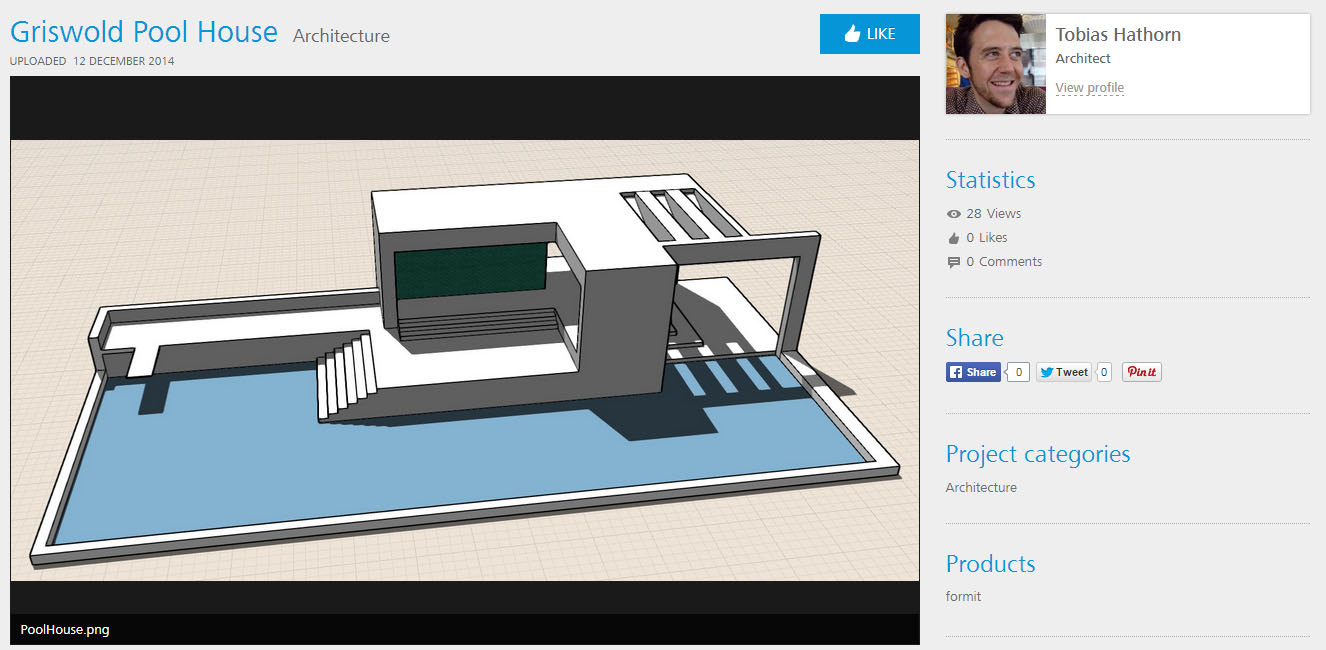
Update: 3/24/15
FormIt has made some much needed improvements which better help it complete against SketchUp. We plan to change our below post as soon as we have time. Some of our below constructive criticism has been addressed.
--Original post--
Last week I had the pleasure of attending an AIA training day in Concord NH. One of the presenters was Tom Vollaro, the Senior Principal User Experience Designer for FormIt as well as an employee at Autodesk. My first impression as Tom pulled out his iPad and Loaded FormIt. "Wow that is pretty impressive, he is going to model something live on an iPad with an audience of architects. That takes some guts."
I was pleasantly surprised how simple it was to use and navigate. Yes, FormIt is really cool, and I can see the benefit of sketching something onsite on your Ipad. No other app that I know of can do this. The problem with FormIt, right now is it is only capable of handling simple massings.
Here is what FormIt does well:
- Works on iPad, so massing spaces on site is a pretty cool feature
- Can also be formatted into a Revit file
What is FormIt lacks:
- No ability to create groups
- No ability to create components
- Precision modeling tools are lacking
- Missing libraries of content similar to SketchUp. If you feel the need you can import models from SketchUp, but that is a lot of extra work.
Though FormIt has a number of great sketching tools, it still lacks the user ability and features that makes SketchUp such a great program for massing.
At the meeting, Tom was very tight lipped about the cost of FormIt. It was my impression after listening to Tom, FormIt, like SketchUp will have a free version available. But, if you want more advanced functionality like importing your model into Revit you are going to have to pay an undetermined fee.
Interesting side note:
FormIt crashed during the live presentation, but the application picked back up exactly where it was when it loaded. We spent an additional 10 or so hours playing around with FormIt in the office without a crash. I would say it is a pretty stable program, and it is nice to see, that if there was a problem, we wouldn't lose our work.
Can you create a detailed model on Formit?
Currently no, I would say FormIt is a great start but it has a long way to go to catch up to the functionality of SketchUp. FormIt is a great application in the making and you should follow it as it develops, but isn't ready to replace Sketchup.
If you are interested in more information or you want to try out the application, you can find more information here.
Emulating Successful Architects to Improve 3D Rendering Techniques
When looking at what defines a successful 3D render from an unsuccessful 3D render, there are a number of factors to take into consideration. From the realism of the work to the actual presentation of the render, some of the most successful architectural 3D renders are able to capture the client’s attention and paint a picture of the final product.
Archdaily, the world’s most visited architectural website, displays some of the finest 3d rendering work from around the world. Each day thousands of individuals visit this website to view some of the highest quality 3D renders, articles relating to architecture, and interviews. Archdaily provides 3D renderings from all across the world, showing how drastically different the architectural vision is in Europe, North America, and Asia.
Archdaily also provides a number of resources to increase your breadth of knowledge including online courses, webinars, and giveaways. Each 3D render provides a detailed description of what is being displayed as well as the artists’ interpretation and the meaning behind every element of the render.
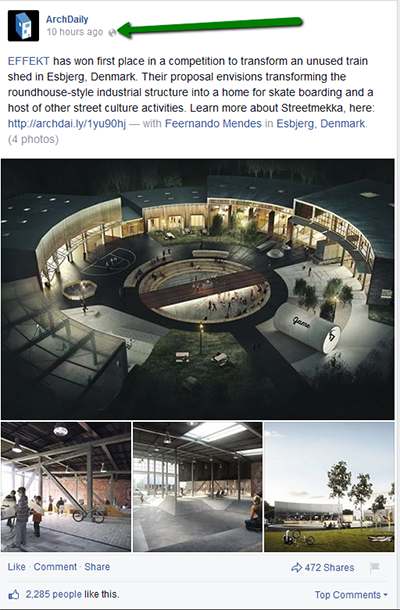
As you can see in this render, the artist EFFEKT was able to transform an unused train shed in Esbjerg, Denmark into an industrial stylized building inspired by street culture. From the details of the skateboard park to the landscape outside of the building, it is easy to visualize how this would look once the renovations are complete. By inserting people into the render, it further enhances the realism of the work and provides a sense of how the space will look when occupied by people. Overall the quality of work and detail in the picture shows how to successfully create the most realistic 3D render possible.
This website along with many others provides an inspiration to broadening one’s architectural style. By emulating the 3D renders displayed by other successful renders, it can enhance the quality of your work and open your eyes up to new techniques and strategies.
From the shadowing to the use of color, each element of the 3D render has a specific purpose. The goal of the render is to provide the most realistic interpretation of the building and/or room by refining every detail possible.
Boston Rendering
An in Depth Look into a Boston Rendering
The attached image was created for Nelson, a global design, architectural firm, engineering, space planning and space management firm headquartered in Pennsylvania. Beacon Capital was the end user and they wished to have an image created which their Real Estate Professionals could use to generate excitement about the existing vacant retail space on the ground floor of 745 Atlantic. Our client came to us with a request. They needed an image created ASAP to show how the space might look but couldn't internally hit their deadline. They turned to PiXate Creative to pull off the render in a professional and efficient manner. Nelson, uses both Revit or SketchUp and in this project we received a SketchUp file.

Step 1.
The first step of this process involved acquiring the SketchUp files provided by the client and moving them to the program Houdini. This enables us to provide our clients with a visual representation of the final product by creating the most realistic photo illustrations.

Step 2.
Defining the camera helps “paint a picture” for what the building will look like when it is finished. Since there was currently an existing building in place, our client asked us to improve the look of the building for marketing purposes.
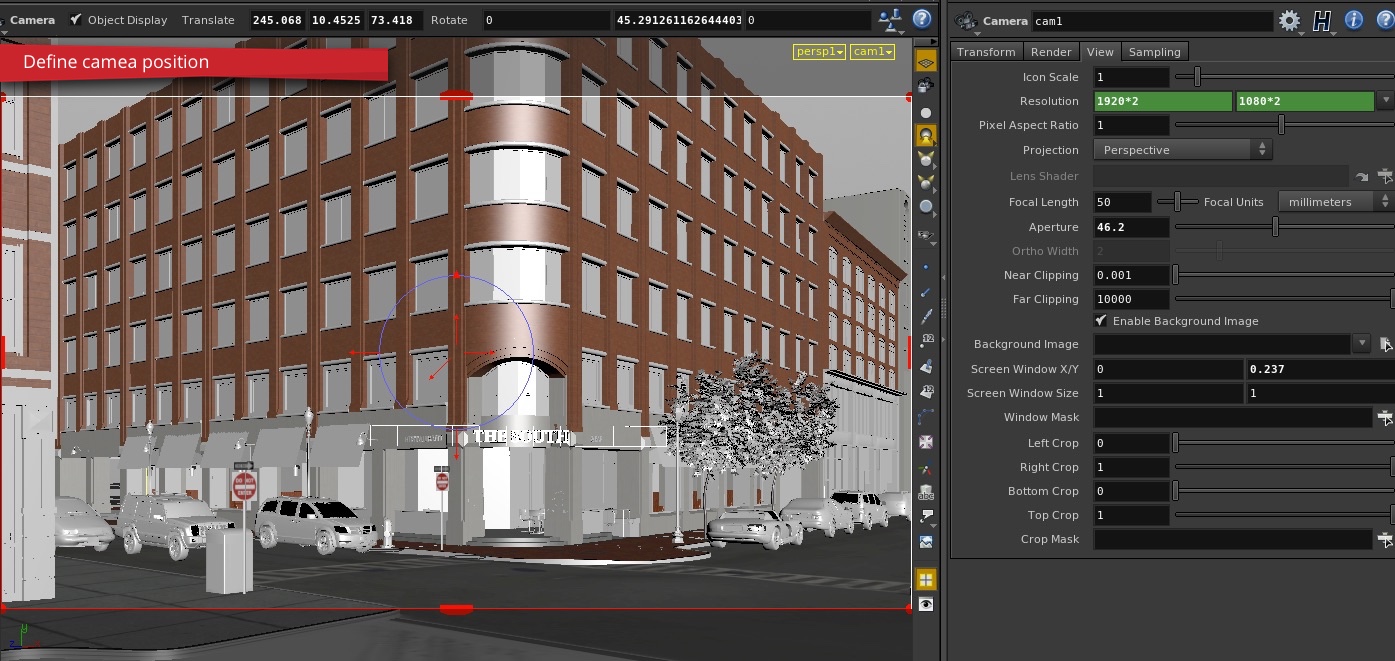
Step 3.
In this step we apply lighting to the image via HDRI. HDRI carries light information including the relationship between the location of the building and how the sun will hit the building.
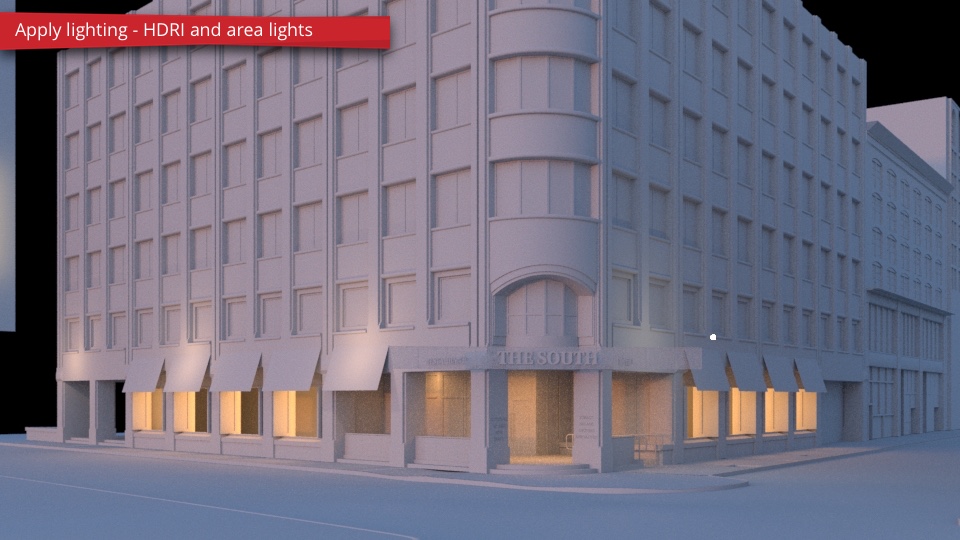
Step 4.
Along with the actual 3D render of the building, we provide additional models to the scene to create a more realistic final product. With the additional models, it provides our clients with a clear and vivid picture of what their building will look like when it is actually constructed.

Step 5.
In this step you can see how we applied a number of materials and textures to make the image more realistic. From the lighting in the windows to the people walking around, we want to provide the most realistic 3D render we possibly can. By applying textures, you can see some of the finer details of the render as well such as the color of the building or the reflection of the glass. You can also see the discolorations on the brick giving the look of imperfection.

Step 6.
As you can in this step, we adjusted the render settings slightly enhance the quality of the image. This part of the process is rather complex due to the number of settings needed to make the image look great. If you are interested in hearing more about this step, send us an email to info@pixatecreative.com.
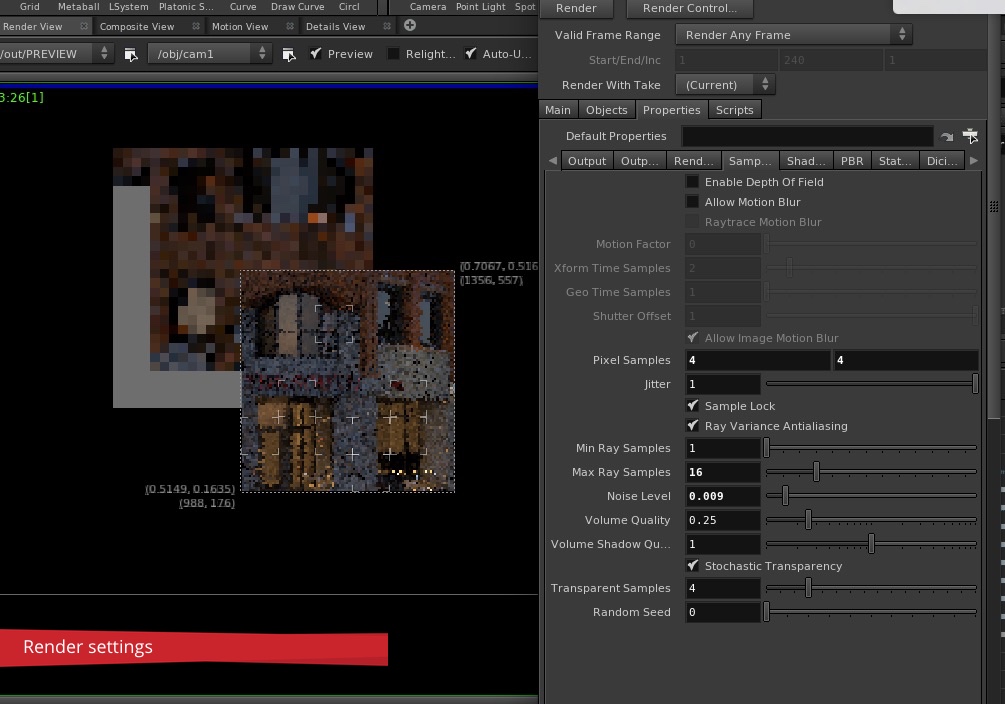
Step 7
The final portion of the process involves adding post process effects to the 3D render through either Photoshop or Nuke. Once this step is complete, the image is ready to be presented to the customer for final approval. As you can see the people were added to the post process and not rendered in the images. Sometimes we add people to the image during the 3D process; we will have a future blog discussing when to add people in 3D renders versus Photoshop, so keep a look out!

Drones for Civil Engineering and Architecture
Using drones for civil engineering and architecture can be incredibility fun, but it can also be very helpful to move your projects through the approval stage as well. The modern drone with a camera practically flies its self, connecting to a GPS satellite and locking into place. In a recent project in Hampton, NH we took our drone for a spin! Here is our drone taking a picture of us, as we took a picture of it. That is me with the iPad.
 Drones can be extremely helpful for use in architectural visualizations. There are several reasons they are so effective.
Drones can be extremely helpful for use in architectural visualizations. There are several reasons they are so effective.
- Not many people are using drones yet, so the pictures are unique. When something is unique, people pay attention to it. A unique image allows for you to grab people attention because it is something they are not used to seeing.
- It is much less expensive to use a drone than a helicopter. To rent a helicopter you are going to look at spending $3k – $5k or so just to get the helicopter in the sky.
- Drones can show you a the entire context of what is around.
- Ariel photos are much harder to recreate, so there can be more artistic license because the perspective can never be seen by the average person walking down the street.
- Not many people are using drones yet, so the pictures are unique. When something is unique, people pay attention to it. A unique image allows for you to grab people attention because it is something they are not used to seeing.
- It is much less expensive to use a drone than a helicopter. To rent a helicopter you are going to look at spending $3k – $5k or so just to get the helicopter in the sky.
- Drones can show you a the entire context of what is around.
cute phone casesphone caseyukon vape
- Ariel photos are much harder to recreate, so there can be more artistic license because the perspective can never be seen by the average person walking down the street.

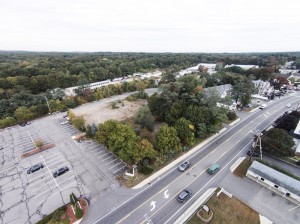 There is a common theme around architectural renders. The general population has a very hard time picturing how projects will look when they are complete. Control the narrative and show people who it will look. You will be rewarded by having your projects go more smoothly. Drones can be a really powerful tool in your arsenal, so make sure and develop some relationships with companies that have them, or pick one up and learn to fly it. We will show you a really good build in a future post, or you can email me at jkutyla@pixatecreative.com and we would be glad to share our setup with you.
There is a common theme around architectural renders. The general population has a very hard time picturing how projects will look when they are complete. Control the narrative and show people who it will look. You will be rewarded by having your projects go more smoothly. Drones can be a really powerful tool in your arsenal, so make sure and develop some relationships with companies that have them, or pick one up and learn to fly it. We will show you a really good build in a future post, or you can email me at jkutyla@pixatecreative.com and we would be glad to share our setup with you.
What is Responsive Design?
Responsive Design: Mobile ‘Magic’
If you’re not browsing the web using mobile devices such as smart phones and tablets, you quickly are becoming the minority. Sure, most people today browse websites from their desktops. But that’s changing, and the changes are, well, everywhere. Internet browsing using mobile devices has more than doubled in the past two years. Give it another year and it just may surpass browsing via the desktop. Still, the user experience today is not a memorable one. The screen often is a blur or is otherwise difficult to read. Until now, the response has been to spend time and money creating an ever-growing number of websites designed for different screen sizes. Admirable, but, most agree, eventually impractical. PiXate Creative is among those who have a better way. It has developed a responsive website that will arrange the website elements to fit any screen naturally. The technology is called Responsive Design.
Responsive Design detects a visitor’s screen size and changes the layout to fit the screen of the device he or she is using. And it doesn’t apply only to small screens. Larger screens can take advantage of this technology, too. Globally, people are accessing the web via their smartphones more often than ever.
A study by Google and Ipsos, a global market research company, focused on how consumers use their smartphones. “Smartphone ownership has jumped globally, increasing 11 percent to 44 percent of the total population in Spain and by 7 percent to 38 percent of the total population in the U.S.” says Jason Spero, Head of Global Mobile for Google.
The study also showed smartphone owners are not just browsing the web; they’re taking action. Of the 92 percent of U.S. smartphone users who seek local information, 89 percent of these take action such as calling a store or visiting a business.
Inside the Buyer’s Brain: A Book Review
Inside the Buyer’s Brain: A Book Review
Hinge, a marketing firm focusing on the professional services industry, has developed a reputation for producing thought-provoking marketing books based on their own research. So when we got the news that their new book, Inside the Buyer’s Brain, was available, we were excited to give it a read. Here’s what to expect:
Overview
Book: Inside the Buyer’s Brain: How to Turn Buyers into Believers
Authors: Lee W, Frederiksen, Ph.D., Elizabeth Harr, Sylvia Montgomery, CPSM, and Aaron E. Taylor
Published by: Hinge Research Institute
Best for: B2B firms, professional services companies, marketing firms
Summary: In their latest book, the Hinge team focuses on the relationship between buyers and sellers of professional services, helping sellers identify where the gaps lie and how they can close more business. Hinge based the book on interviews with over 1,300 buyers and sellers of professional services.
What I liked
- Research
It’s obvious that research is at the heart of this book, and the Hinge team makes the data easy to understand with lots of graphs, charts, and infographics.
- Readability
Hinge has a knack for taking a topic that could easily be dry or academic and making it fun and readable. Inside the Buyer’s Brain uses the same light, sometimes irreverent tone that made their other books so popular, while not skimping on the hard facts. Interspersing the written content with lists, infographics, and case studies, the writers do a good job keeping the reader interested and making it easy to digest the information. One of my favorites: at the end of each chapter, there is a box summarizing the “Key Takeaways”—nuggets of wisdom that you can walk away with.
- Visuals
Inside the Buyer’s Brain offers visually compelling graphics that make the book fun to read. Along with colorful graphs and charts, Hinge has added alluring, eye-catching pictures that demonstrate the skill of their graphic design team.
What I learned
- 1. Sellers truly do not understand their buyers!
I knew that there would probably be a perception gap between buyers and sellers on certain issues. But I had no idea it would be so large! For example, for one part of their survey, Hinge asked buyers to state their top business challenges. Then sellers were asked the same question. In all categories except technology, sellers badly underestimated buyers’ most important business challenges.
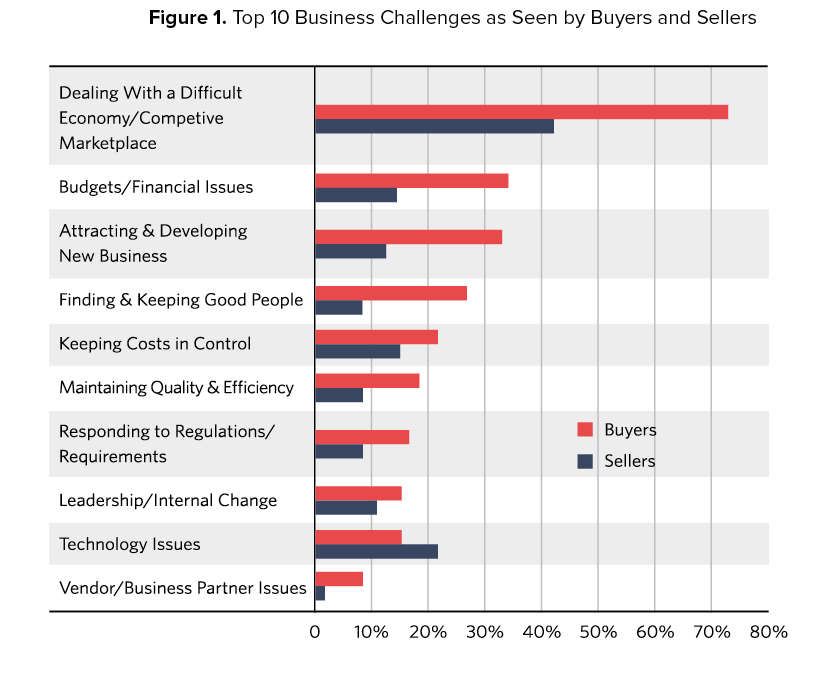
Hinge highlighted a problem: sellers misunderstand buyers’ needs. This underlying problem has profound implications for many other aspects of a firm’s business, including creating relevant service offerings, communicating value to prospects and clients, and expanding relationships with current clients.
2.Most professional services firms are not well known
Hinge’s research demonstrates that, while many firms offer quality services that tend to bring back repeat clients, the firms are not well known outside their circle of clients. The chart below illustrates this problem: while nearly 60% of all buyers gave their vendors high marks for reputation, only about 23% of buyers thought that their vendors were well known. The Hinge team shows how this gap presents a huge opportunity for firms to move ahead of the competition by clearly demonstrating their value and message, and then goes on to offer techniques for making that happen.
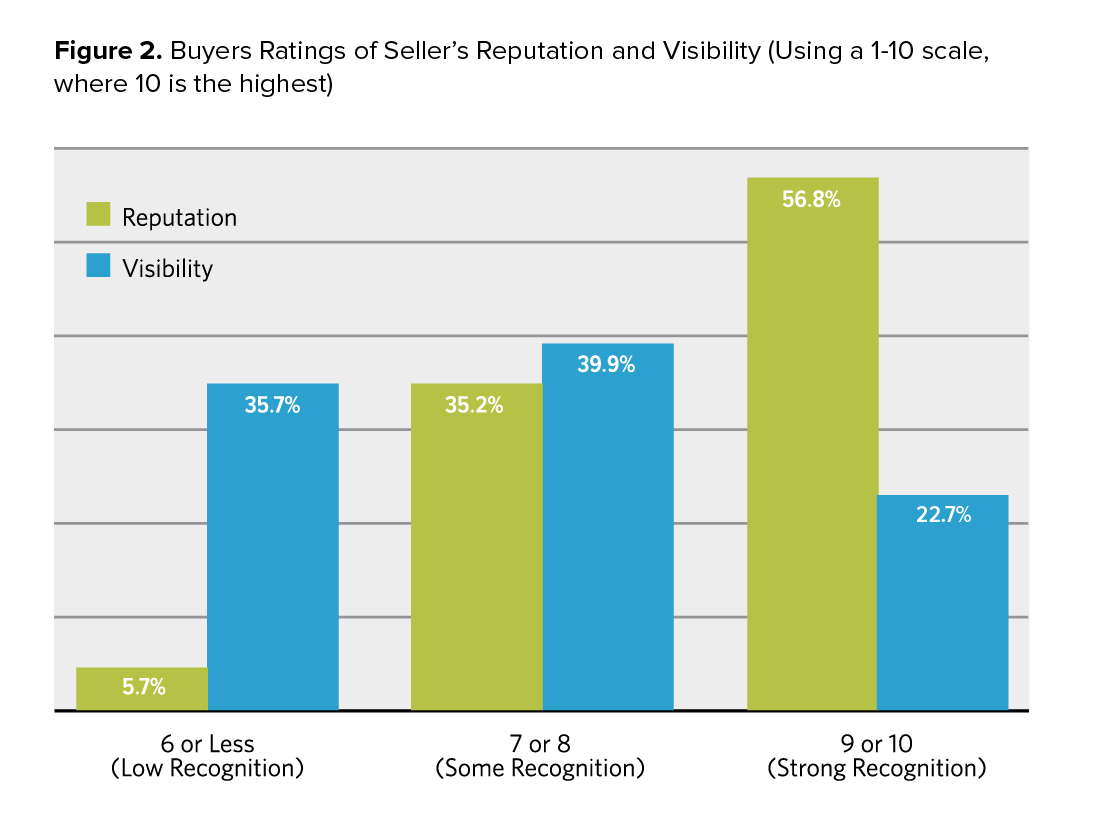
- 3. Winning firms do things differently
One of the most interesting takeaways from the book is a comparison, on page 66, between the behaviors of winning firms (those firms that successfully closed the deal) and runner-up firms (those firms that almost closed the deal but then ended up not getting chosen). For example, winning firms ranked a certain behavior—educating prospects with new ideas or perspectives—very high in their process of attracting new business, while runner-up firms ranked that same behavior low on their list of priorities. Hinge ties it all together with a neat infographic, and offers strategies for changing your marketing model.
There are plenty more golden nuggets of knowledge in this book, but it’s impossible to cover all of it in a single book review. As Hinge says, “if you are a professional services firm executive interested in growing your business, entering new markets, or introducing a new service, you need to get inside the minds of your clients and look at your firm from their perspective.” If you fit that category, Inside the Buyer’s Brain should be recommended reading.


